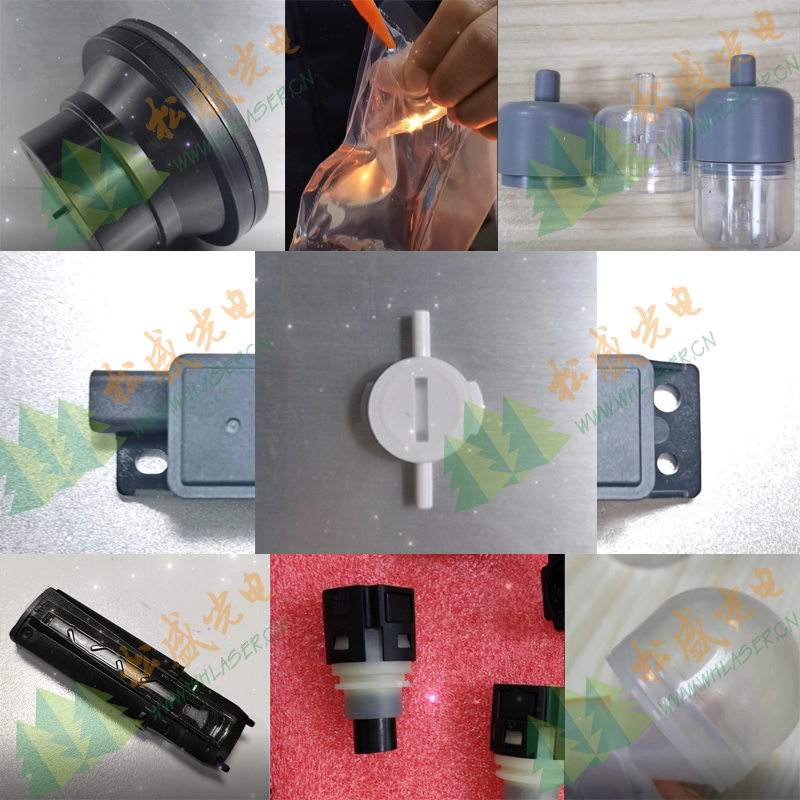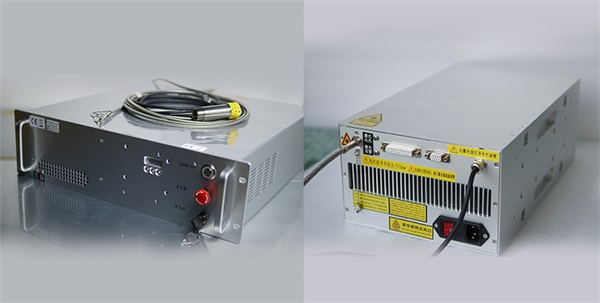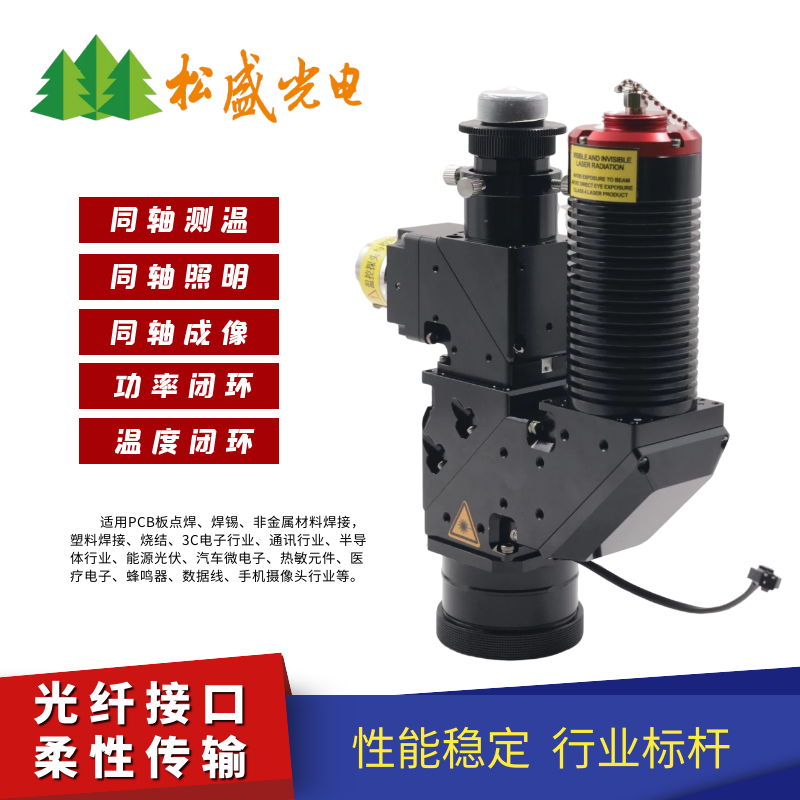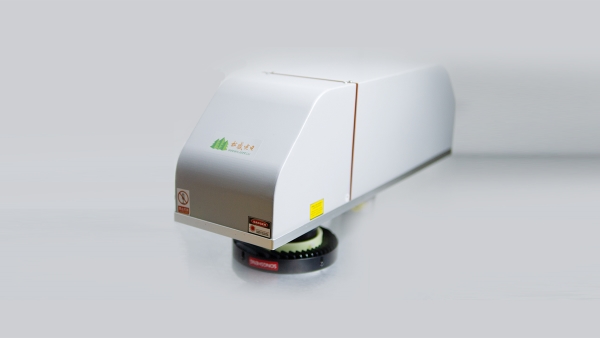976nm Semiconductor Laser Will Become a Powerful Tool for Plastic Welding
Plastic are widely used in various industries fields, and the demand for plastics in production has gradually approached or even surpassed that of steel materials. Especially in industries such as electronics manufacturing, medical care, food packaging, and automotive, plastics have become one of the indispensable key materials. With the extensive use of plastics, the demand for precise and high-strength bonding of various plastic components in production is also increasing.

Illustrations of Laser Welding Cases for Various Plastic Parts
The selection of plastic - part connection processes has an important impact on the final application of plastic products. Traditional plastic connection processes include threaded connection, adhesive connection, insertion connection, pressing connection, etc., as well as fusion connection represented by hot - plate welding and ultrasonic welding. These connection methods have the advantages of simple operation, convenient connection and strong applicability. However, their disadvantages are also quite obvious. For example, they have specific shape requirements and relatively low connection strength. When facing complex irregular shapes such as three - dimensional geometries and hollow shapes, as well as large - sized parts, and even plastic parts with certain air - tightness requirements after connection, the operable space is small and the efficiency is low.
At the same time, in the modern industrial field, which pursues product innovation and quality improvement, the requirements for welding quality are getting higher and higher. With the development of laser technology, the gradual application of plastic welding processes has been promoted. Laser plastic welding technology has become an important development direction and is gradually becoming a new favorite of connection materials. It is often used for the welding of plastic parts of white household appliances, automotive plastic parts and other components.
Principle of Laser Plastic Welding
Laser plastic welding, also known as laser transmission welding, requires the upper plastic workpiece to have high light transmittance, while the lower workpiece can absorb laser energy. Therefore, the current mainstream welding combinations are "transparent plastic + black plastic" and "transparent plastic + transparent plastic".
Since most transparent plastics have high light transmittance and low absorption for the 800nm~1100nm wavelength band, based on this, Songsheng Optoelectronics has launched a 976nm semiconductor laser. It integrates a high-precision control system in a compact structure and is easy to use. Utilizing advanced semiconductor laser technology, it outputs near-infrared laser with a central wavelength of 976nm. The laser energy at this wavelength can penetrate the surface of transparent or translucent plastics, be absorbed by the lower layer and converted into thermal energy, which can be used for precise and efficient plastic welding. This laser has high electro-optical conversion efficiency and provides continuous laser output. The power level can be selected according to the welding process requirements, with an adjustable range from several watts to hundreds of watts, enabling it to handle both large-area and high-speed plastic component welding operations.

Illustration of Songsheng Optoelectronics 976 Water-Cooled/Air-Cooled Constant Temperature Semiconductor Laser
In the actual application of laser plastic welding, in addition to the laser itself, it also needs to be equipped with a welding head and welding fixtures, etc. When using a 976nm semiconductor laser for plastic welding, first, the two parts to be welded are assembled together with the help of fixtures. The basic principle of welding is that the laser beam output by the welding head passes through the upper transparent plastic and is accurately projected to the area to be welded of the lower plastic part under program control; the lower plastic melts after absorbing the highly focused laser energy, and makes the contact surfaces of the upper and lower plastic parts fully melt and combine through heat exchange. With the assistance of a certain external force, a weld seam is formed after cooling to complete the final welding.
Songsheng Optoelectronics independently developed the 976nm constant temperature semiconductor laser, which is specially used in the field of laser soldering and plastic welding. Its PID algorithm has a fast response speed (15μs) and is not easy to burn the solder joints. The laser has a built-in temperature closed-loop feedback system, which monitors and adjusts the temperature of the heating point in real-time through an infrared sensor, so that the temperature of the processing point is constant at a set temperature for welding. Air cooling/water cooling options are available according to customer needs, and the output power includes 10W, 100W, 200W, 300W, and 500W.
At the same time, with the help of a dedicated control system, precise heat control and local heating during the transmission welding process can be achieved, ensuring consistent welding quality and avoiding adverse effects on surrounding materials. It is widely used in the welding of precision plastic parts in industries such as auto parts, medical devices, and electronic components.
Testing of PC+ABS Plastic Welding

Diagram of 976nm Coaxial Temperature Measurement Single-Focus Welding Head
In actual operation, to ensure the weld quality and sufficient melting depth, it is necessary to comprehensively consider the relationship between welding speed and laser power, and find the optimal process window.
Taking the welding of PC and ABS plastics as a test, first, the two plastic parts are placed in a carrier and stacked, and clamped with a fixture by applying pressure.
When the laser output power is adjusted to 300W and the welding speed is set to 20mm/s (maximum up to 10000mm/s), the two layers of plastic are successfully welded, with uniform weld fusion, moderate weld width, good sealing performance, and the strength meets the requirements after the tensile test.
When the laser output power remains unchanged at 300W and the welding speed is reduced to 10mm/s, the two layers of plastic are successfully welded, with uniform weld fusion, a wider weld, and good sealing performance; however, due to the excessively high temperature of the molten pool, some materials may decompose, resulting in a decrease in welding strength.
When the power is adjusted to 200W and the welding speed is set to 20mm/s, the weld width is moderate, the fusion is good, the sealing performance is good, but the strength in the tensile test is lower than that when welding with high power.
Advantages of Laser Welding
Laser welding is similar to the fusion bonding process, but the former has more obvious advantages:

Integrated Galvanometer Scanning Plastic Welding Processing System
First, it offers high precision. The laser beam features a small spot size and high uniformity, enabling precise targeting of even the tiniest welding areas. It can rapidly convert laser energy into the heat required for welding, achieving precise welding results and significantly boosting welding efficiency. When combined with a professionally designed welding head, it ensures that the laser energy is fully absorbed in the welding zone, guaranteeing the strength of the weld.
Second, it has a minimal heat - affected zone. During the welding process, it can prevent thermal damage to the plastic surface, preserving the material's transparency and smooth finish. This means that after transparent welding, the product not only retains its original appearance but also gains enhanced structural stability.
Third, it resolves the contradiction between welding speed and welding quality that exists in traditional welding methods. It can complete large - area welding in a short period, greatly improving production efficiency. A welding operation that originally took several hours can now be easily finished in just a few minutes or tens of minutes, saving a substantial amount of time and cost.
In addition, the non - contact welding operation avoids the mechanical stress and vibration generated by traditional connection methods. It protects the integrity of the plastic surface and ensures the precision of the weld. The connection between materials is tighter and more reliable, with excellent sealing performance, meeting the high - standard requirements of products such as waterproof and dustproof.
Summary
At present, the 976nm semiconductor laser has demonstrated strong market potential and application value, and it is a powerful tool for plastic welding. Especially in automotive plastic welding, it can achieve efficient and stable welding results. In interior welding, it can be used for welding instrument panels, center consoles, etc. In exterior part welding, it can easily handle the welding of door handles, car lights, etc. In terms of welding automotive electronic components, the 976nm semiconductor laser also performs excellently. It can be used for plastic welding of many electronic components, significantly improving the connection strength and sealing performance, and ensuring the stability and reliability of various components. In the future, with the continuous development of its functions, 976nm products will also usher in a wider range of applications.
Contact: Mr.Xiao
Phone: +86-13385280662
E-mail: market001@whlaser.cn
Add: Room 02, Floor 5, Building 9, Gezhouba Sun City, No. 40, Gaoxin 4th Road, Donghu New Technology Development Zone, Wuhan